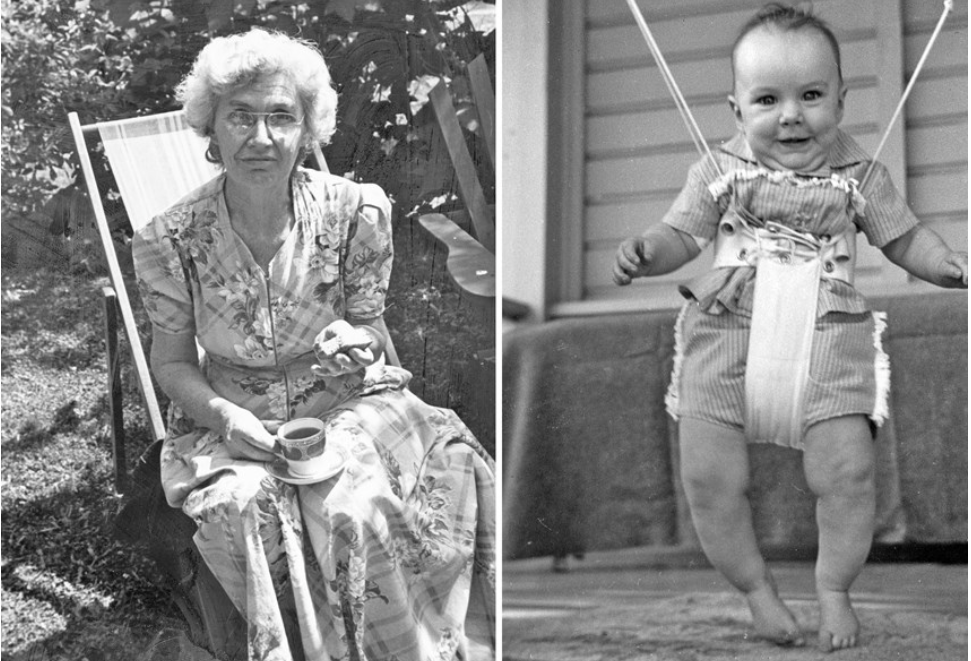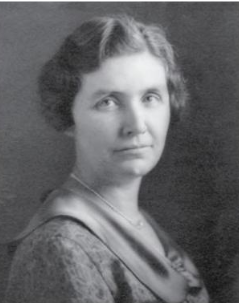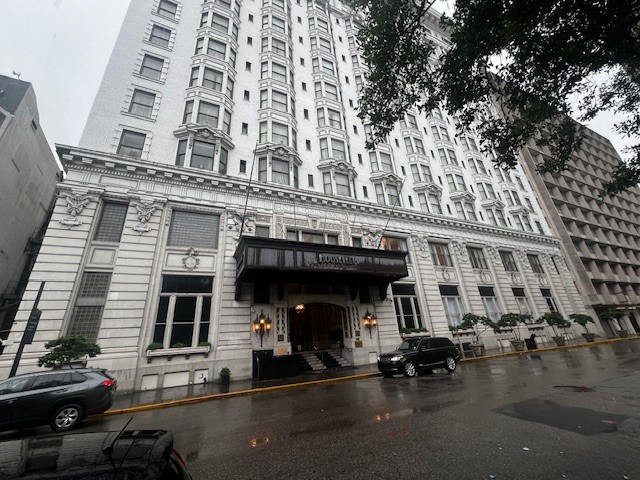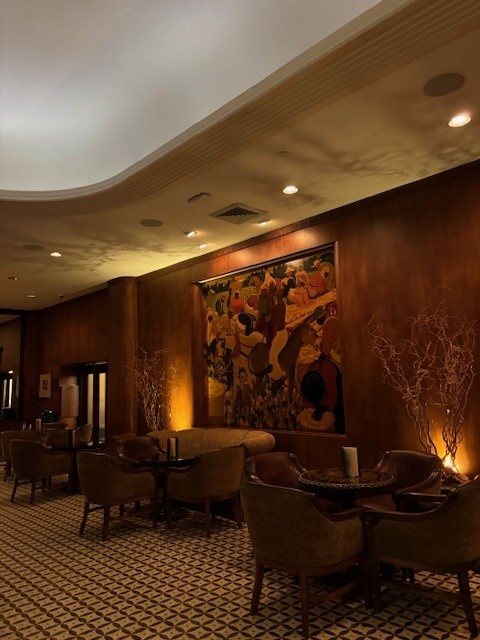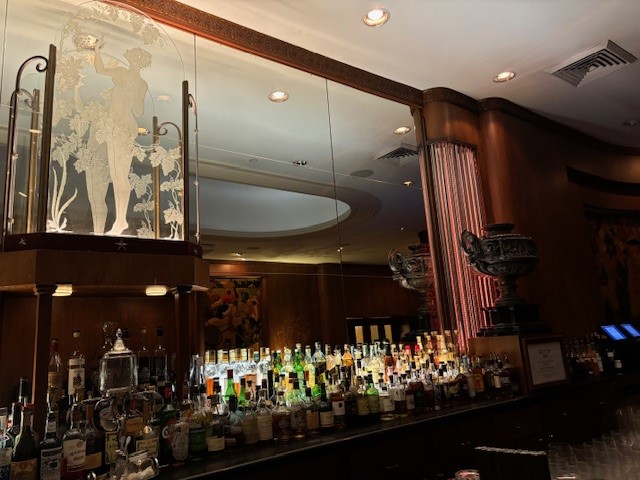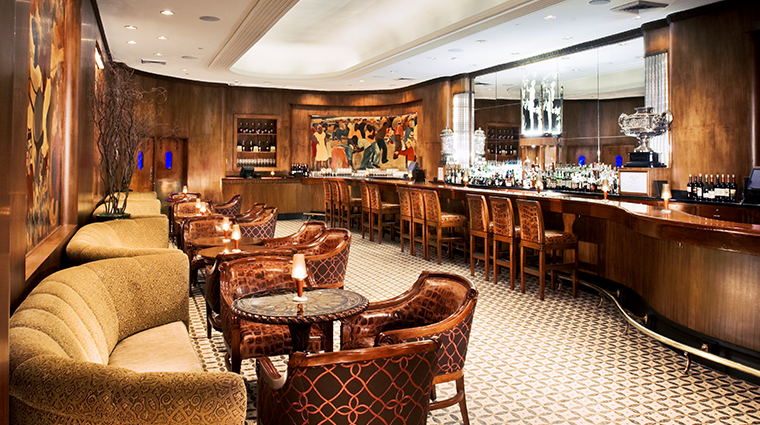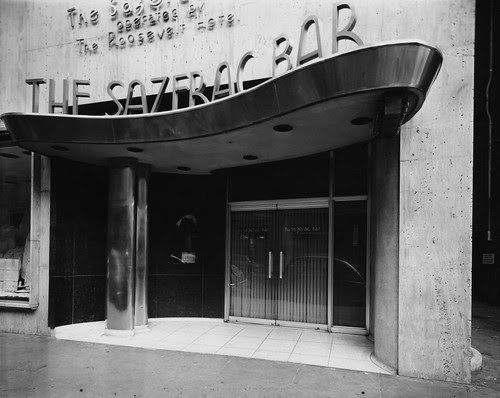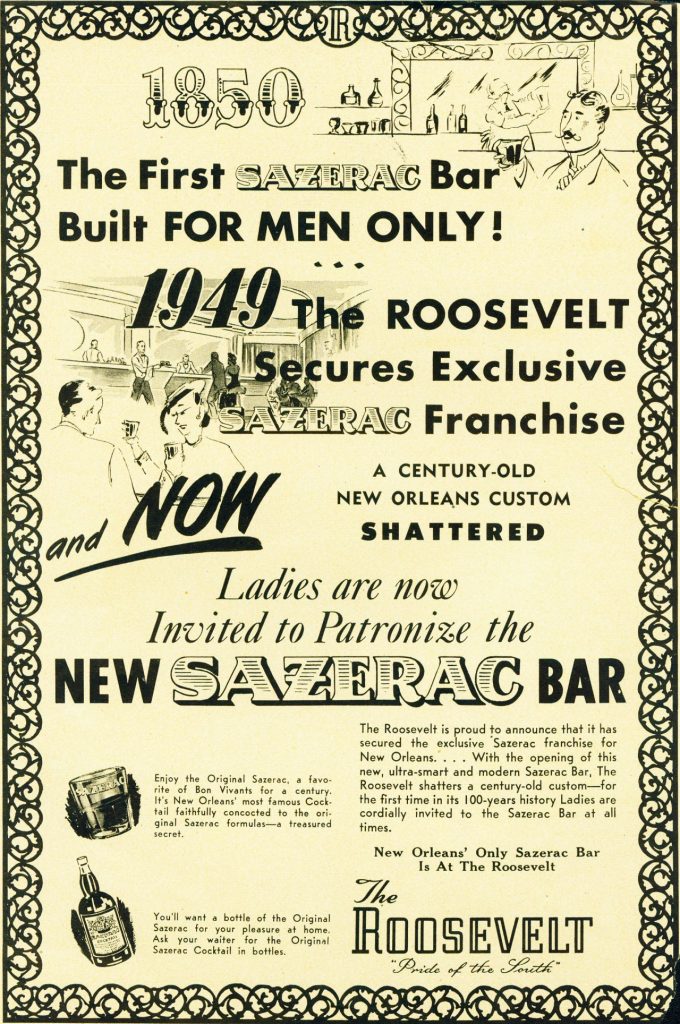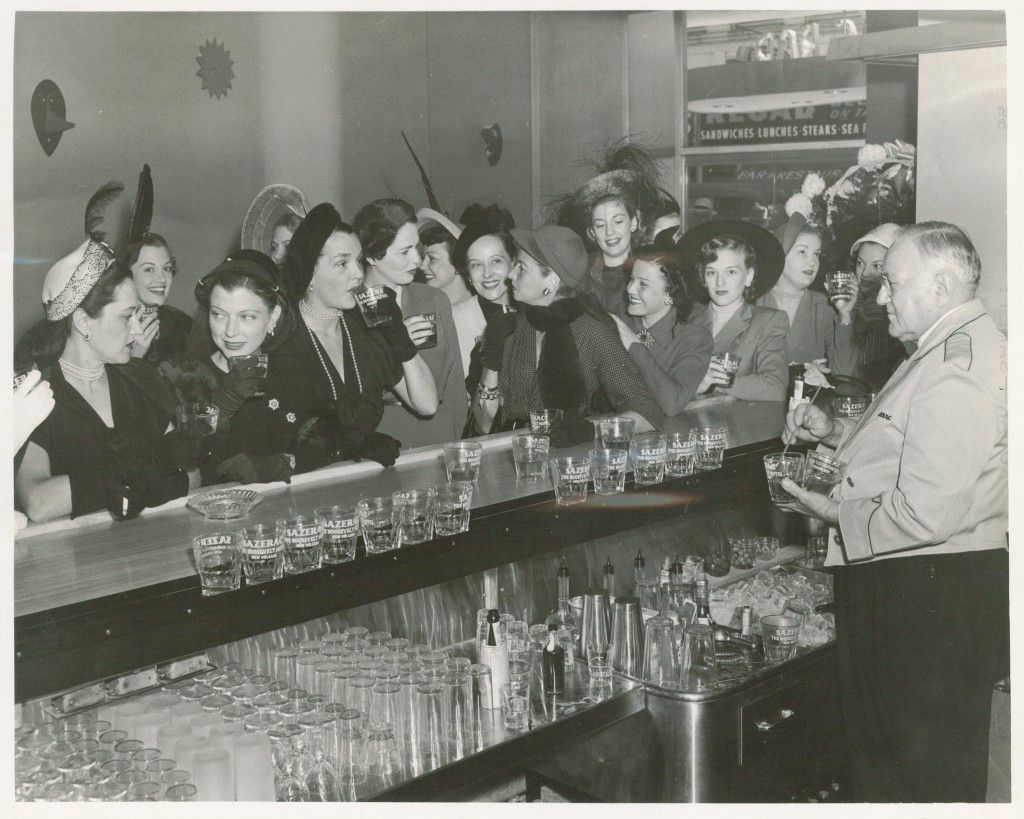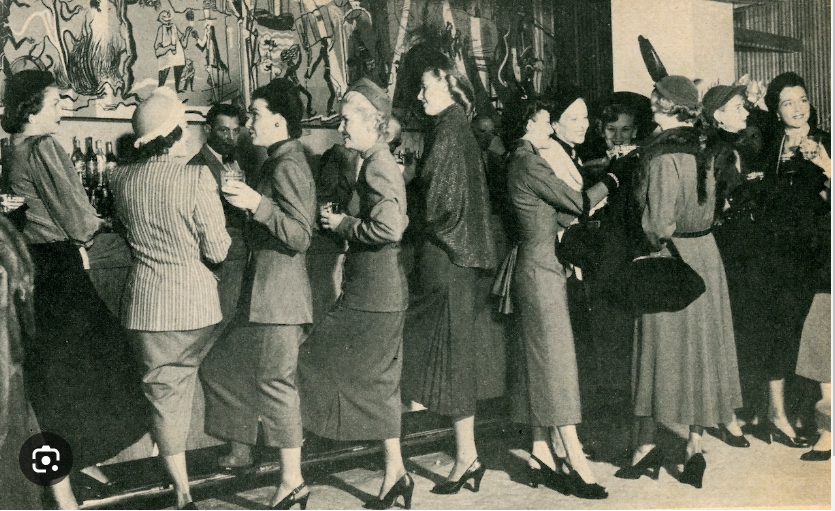It’s Women’s History month and I thought I would contribute to this historical month with a post about the creator of the Jolly Jumper, an Indigenous Canadian woman.
Let’s jump right in!
Olivia as a younger woman.
Source: Canadian Encyclopedia
NOTE: Olivia was not BORN Canadian she would go on to live in Canada for most of her life (details below).
Olivia Poole: The Indigenous Canadian Who Invented The Baby Jumper
ABOUT OLIVIA & THE INVENTION OF THE BABY JUMPER (from the Canadian Encyclopedia)
Born in 1889 in Devil’s Lake, North Dakota, Poole grew up in Minnesota at the White Earth Indian Reservation.
Olivia was a talented pianist and went on to study music at Brandon College in Manitoba. While in Manitoba, she met Delbert Poole and the two were married in 1909. They had seven children together, first moving to Ontario before settling in Vancouver in 1942.
On White Earth Reservation, Olivia Poole saw mothers using cradleboards as baby carriers. Cradleboards allowed mothers and caregivers greater freedom to work or perform their daily routine while their baby was safely secured on the board. Some mothers suspended cradleboards from a sturdy tree branch or structure to act as a hammock or swing, providing the baby with amusement. Poole witnessed mothers pulling on the ropes or leather straps suspending the cradleboard to bounce the baby up and down. This allowed mothers to work uninterrupted while the babies entertained themselves with the bouncing motion.
Photo above: Cradleboard-Mary Butler with her infant Lyda in a traditional cradle, probably on Makah Indian Reservation – 1900 (courtesy Makah Cultural and Research Center via Canadian Encyclopedia)
In 1910, after Poole had her first baby, she remembered how mothers on White Earth Reservation used this cradleboard technique to calm their babies. By this time, she was living in Ontario and did not have a cradleboard of her own. Instead, she fashioned one with items from around her house. She sewed a cloth diaper into a harness and created a brace with an axe handle. This device was different than a cradleboard, as the baby’s legs dangled freely and there was no rectangular board attached. Eventually, she added a spring and rubber connection so that the baby could bounce on its own. Her swing was low enough for the baby’s toes to reach the ground, allowing the baby to exercise its leg muscles.
Poole called her invention the “Jolly Jumper” and she used it for all seven of her children. When her children were grown, she continued to make improvements to the baby jumper design for her grandchildren. Given its success within the family, Poole’s family convinced her to market her invention. By the early 1950s, Poole’s Jolly Jumper went into mass production for retail. Her eldest son, Joseph, helped her file and apply for a patent in 1957 where her invention is called the “Baby Supporter and Exerciser.” Together, they created Poole Manufacturing Co. Ltd. which was based in British Columbia.
In 1967, Eaton’s Spring and Summer catalogue advertised the Jolly Jumper as providing “fun and exercise for babies aged 3 mos. to walking for $10.98.” (Eaton’s Spring and Summer catalogue, 1967) (Source).
Source: CBC.ca
The Poole family sold the business in the 1960s but today the Jolly Jumper brand is owned by a company based in Mississauga, Ontario (just outside of Toronto).
Jolly Jumper advertisement as seen in Life Magazine October 10th, 1969.
Source: Pinterest
From the CBC archive-Molly Bobak (Canadian painter) visits Tabloid to talk about her current career plans and demonstrates a new kind of baby entertainment. Watch the video here (I could not embed it).
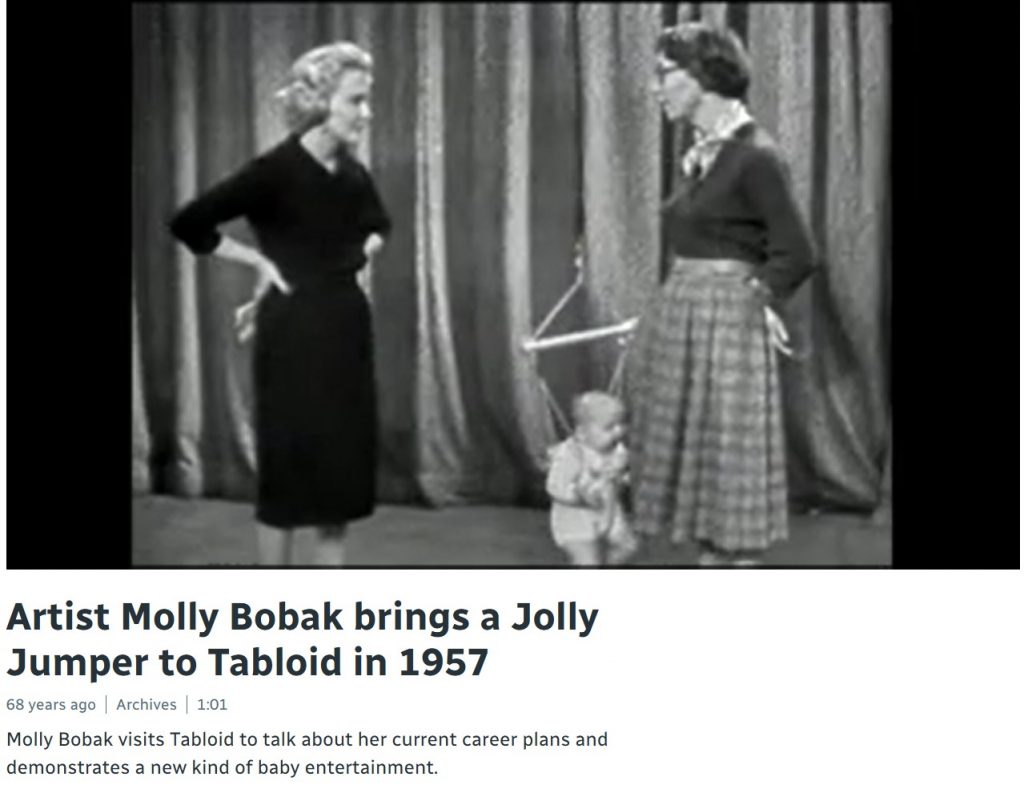
Ivory Snow Commercial from 1950s or possibly the 1960s featuring the Jolly Jumper you would receive with your purchase (video link).
Olivia Poole’s Legacy
She was one of the first Indigenous women in Canada to patent an invention.
A Toronto Star article from July 1962 reported that Caroline Kennedy, the daughter of then-US President John F. Kennedy, was photographed in the jumper and referred to the jumper as a “lifesaver” for mothers (Source).
Outstanding!
To end this post here is a short video from Historica Canada about Olivia Poole (Video link).
I hope you enjoyed learning about this incredible woman, who until this post I had no clue about. So we are all learning together!
Question Time: Were you in a jolly jumper as a baby? I know I was! Share any thoughts on this topic in the comment section below.
Further Reading: Archived Blog Posts on Women’s History (1920s-1960s)
Thanks for dropping by!
Liz

